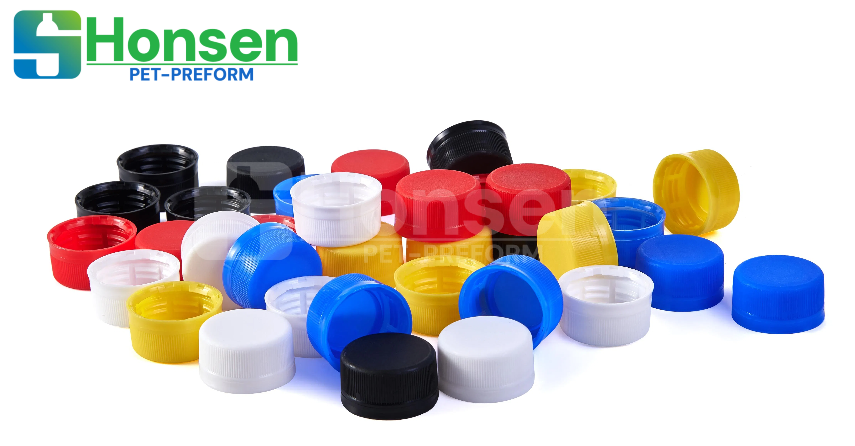 In the ever-evolving world of packaging, Plastic Bottle Caps are an essential component that can significantly influence the overall cost structure of beverage and food packaging. As businesses seek ways to optimize their packaging processes, it is crucial to understand the cost factors associated with plastic caps, as well as their role in maintaining competitive advantage in the marketplace. This article dives into the cost efficiency of plastic bottle caps, the factors that determine their price, and how businesses can strategically utilize these caps to stay ahead in a competitive industry.
In the ever-evolving world of packaging, Plastic Bottle Caps are an essential component that can significantly influence the overall cost structure of beverage and food packaging. As businesses seek ways to optimize their packaging processes, it is crucial to understand the cost factors associated with plastic caps, as well as their role in maintaining competitive advantage in the marketplace. This article dives into the cost efficiency of plastic bottle caps, the factors that determine their price, and how businesses can strategically utilize these caps to stay ahead in a competitive industry.
Cost Efficiency of Plastic Bottle Caps
The primary goal of any packaging solution is to provide a balance between cost and functionality. Plastic Bottle Caps are no exception, as manufacturers aim to deliver high-performance solutions without inflating the overall cost of packaging. The manufacturing process of these caps typically involves the use of plastic resins, such as polyethylene or polypropylene, which are cost-effective materials compared to alternatives like metal or glass. By utilizing these materials, companies can keep production costs low while ensuring the necessary durability and sealing performance.
However, while the basic cost of producing plastic caps is relatively affordable, additional features such as tamper-evident rings, child-resistant designs, or eco-friendly materials can increase the price. It’s important for businesses to carefully assess the trade-offs between cost and the added value these features bring. For instance, while incorporating an anti-theft ring adds a layer of security and consumer trust, it may also raise the per-unit cost slightly. Therefore, businesses must consider the value these added features provide in terms of brand protection and consumer confidence.
Key Factors Influencing the Price of Plastic Bottle Caps
The price of Plastic Bottle Caps can be influenced by several factors, with volume orders being one of the most significant. Generally, the more units ordered, the lower the cost per cap due to economies of scale. Larger manufacturers with higher production volumes can benefit from reduced material and labor costs, passing these savings on to their customers. For smaller businesses, however, the unit price may be higher unless they can secure long-term contracts or participate in bulk purchasing programs.
Another critical factor in pricing is the customization of the cap. Standard plastic bottle caps are typically less expensive than customized ones, which may require specific molds, additional design work, or unique features tailored to a particular product or brand. For instance, custom caps that incorporate unique colors, branding, or special sealing mechanisms might carry a higher cost, but they can also provide a marketing edge and stand out on store shelves.
The Cost-to-Benefit Ratio of Plastic Bottle Caps
When considering the cost of plastic bottle caps, businesses must weigh the benefits they provide against the price. Beyond the basic sealing function, these caps contribute to product integrity, customer satisfaction, and brand security. A cap with superior sealing performance ensures that the product stays fresh for longer, reducing waste and minimizing the likelihood of product recalls due to contamination. This aspect of packaging directly impacts customer satisfaction and brand loyalty, which can lead to increased sales and market share.
Incorporating additional security features, such as anti-theft rings, can also provide valuable protection against product tampering, which is essential for building consumer trust. Even though these features add to the cost, they offer long-term value by safeguarding the brand's reputation. Furthermore, Plastic Bottle Caps that offer better durability and leak prevention help reduce damage during transportation, which can significantly lower costs related to damaged goods.
Staying Competitive with Plastic Bottle Caps
In a competitive market, staying ahead requires more than just having a cost-effective product—it’s about offering packaging solutions that resonate with consumers and align with industry trends. Sustainability, for instance, is becoming increasingly important. As consumers grow more environmentally conscious, businesses are under pressure to use eco-friendly materials. Switching to biodegradable or recyclable materials for plastic bottle caps can be a way to differentiate a brand and align with consumer values, even if it comes with a slightly higher production cost.
Additionally, market demands for innovation and convenience mean that the design and functionality of plastic bottle caps are evolving rapidly. Offering caps that are easy to open, secure, and tamper-evident can create a positive user experience, ensuring repeat purchases and fostering consumer loyalty. By paying attention to these emerging trends and incorporating them into their packaging strategy, businesses can maintain a competitive edge while keeping costs manageable.